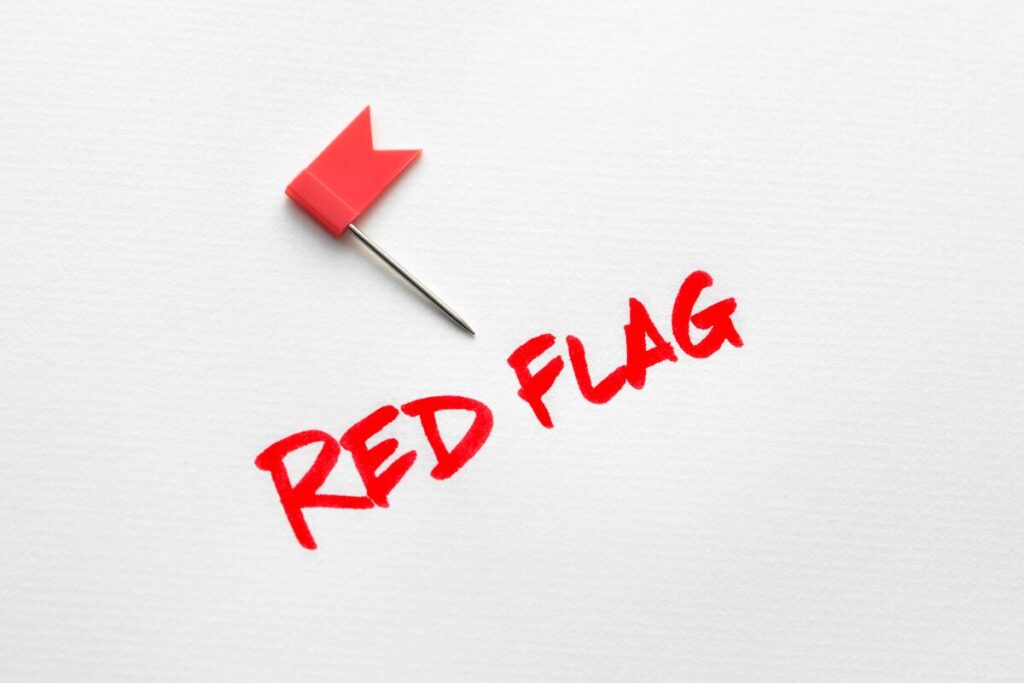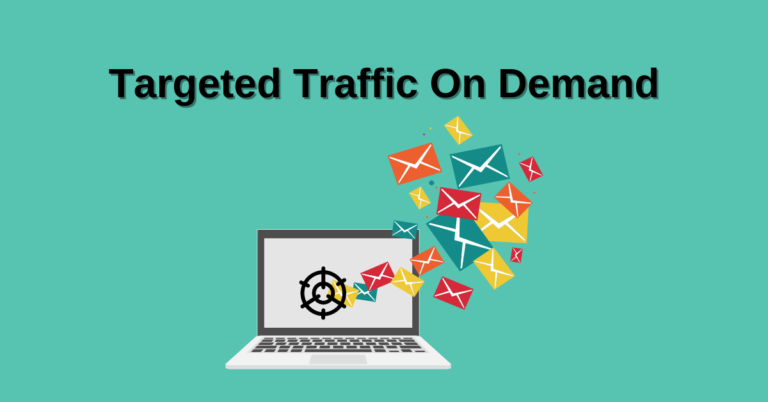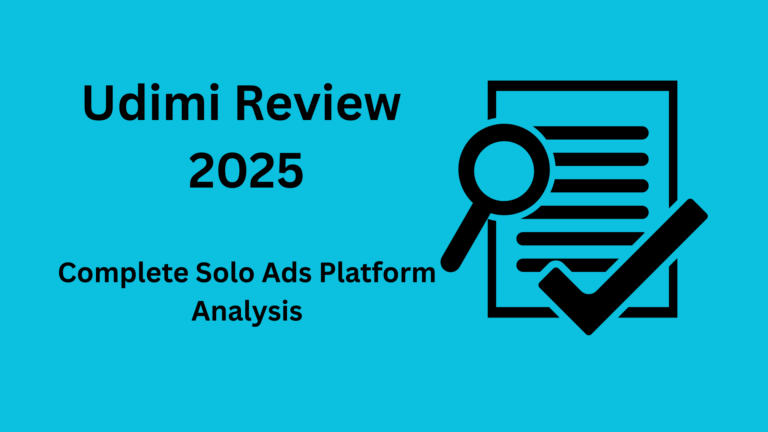Best Solo Ad Vendors: 5 Insider Tips + Trusted Sources
Finding quality traffic sources can make or break your email marketing campaigns. When it comes to solo ads, choosing the right vendor isn’t just important—it’s essential for your ROI.
I’ve spent years testing dozens of solo ad providers and analyzing thousands of clicks to separate the legitimate traffic sources from those selling recycled or bot-driven clicks. This comprehensive guide will walk you through finding and working with the best solo ad vendors who can deliver real subscribers who actually open emails and click your links.
Solo ads remain one of the fastest ways to build an email list in competitive niches, but success hinges entirely on working with reputable vendors. Let me share what I’ve learned the hard way so you can avoid costly mistakes.
Key Takeaways
- Quality solo ad vendors deliver targeted traffic that converts, not just high click numbers
- Starting with small test buys (100-200 clicks) helps evaluate vendor performance before larger investments
- Udimi stands out as the most reliable solo ad marketplace with built-in seller ratings and quality filters
- Transparent vendors provide detailed targeting options and real-time performance analytics
- Building long-term relationships with proven solo ad vendors can lead to better rates and customized campaigns
This guide covers everything from identifying quality solo ad vendors to scaling successful campaigns. You’ll learn the critical questions to ask before purchasing, red flags that signal poor traffic quality, and specific marketplaces where trusted sellers congregate. I’ve also included testing strategies that won’t drain your marketing budget while you identify your top-performing traffic sources.
Whether you’re promoting affiliate offers, building a list for your own products, or driving traffic to webinars, working with the right solo ad vendors is crucial. By the end of this article, you’ll have a clear roadmap for finding, testing, and scaling with solo ad providers that deliver results.
Why Your Solo Ad Vendor Choice Makes or Breaks Your Campaign
Not all solo ad traffic is created equal. The difference between a high-quality vendor and a mediocre one isn’t just a few percentage points in conversion—it can mean the difference between profitable campaigns and wasted marketing dollars. Quality vendors maintain engaged lists of real people interested in your niche, while poor vendors may use questionable methods to inflate their numbers.
The best solo ad providers carefully cultivate their email lists, regularly clean inactive subscribers, and only promote relevant offers to maintain engagement. These practices result in traffic that actually converts. Meanwhile, low-quality vendors often recycle the same tired lists across multiple niches, resulting in subscribers who rarely open emails or make purchases.
I once tested two vendors at identical price points of $0.40 per click. The first delivered 500 clicks that resulted in 127 new subscribers and 3 sales. The second also delivered “500 clicks” but only generated 42 subscribers and zero sales. This stark difference highlights why vendor selection matters more than almost any other factor in solo ad marketing.
“The most expensive traffic is cheap traffic that doesn’t convert. I’d rather pay $1 per visitor for engaged prospects than $0.30 for tire-kickers and bots.” — Email marketing veteran with 15+ years experience
5 Insider Tips to Find The Best Solo Ad Vendors
After years of testing countless solo ad providers across multiple niches, I’ve developed a system for identifying vendors worth your marketing budget. These five strategies have consistently helped me find reliable traffic sources while minimizing risk.
1. Track Record Speaks Louder Than Promises
Never trust a solo ad vendor who can’t provide verifiable results. Reputable vendors maintain detailed statistics about their campaigns and aren’t afraid to share them. Ask for screenshots of recent campaign results, testimonials from actual customers (that you can verify), and evidence of list engagement metrics.
The best vendors typically have established presences on solo ad platforms like Udimi where their performance is publicly rated. Look for vendors with at least 100 positive reviews and satisfaction ratings above 95%. Be especially wary of vendors who operate exclusively through direct payments without any third-party verification system.
I always ask potential vendors how frequently they mail their list and what types of offers perform best. Knowledgeable vendors can quickly tell you what works with their audience and what doesn’t—this indicates they actually understand their list rather than just blasting anything to everyone.
| Vendor Quality Indicator | What To Look For |
|---|---|
| Verifiable Reviews | 100+ positive reviews on platforms like Udimi |
| Transparency | Willingness to discuss past campaign performance |
| List Maintenance | Regular cleaning of inactive subscribers |
| Niche Knowledge | Clear understanding of their audience’s interests |
2. Start Small Before Going All-In
One of the most costly mistakes I see marketers make is purchasing large solo ad packages before testing a vendor’s traffic quality. Always start with a minimum viable test—typically 100-200 clicks—before committing to larger buys. This approach limits your risk while giving you enough data to evaluate performance.
During your test, track not just opt-in rates but also email open rates, click-through rates, and ultimately conversions from your new subscribers. A truly valuable solo ad doesn’t just deliver subscribers; it delivers subscribers who engage and eventually purchase.
With 10 Dollar Solo Ads, you can start with smaller packages to test vendor performance before scaling up your email marketing campaigns. Their affordable entry points make it easier to find quality traffic without risking your entire marketing budget on unproven sources.
3. Demand Targeting Specifics, Not Generic Lists
Quality solo ad vendors know exactly who’s on their list and can provide specific demographic details. Before purchasing, ask vendors about their audience demographics, interests, and how they built their list. Vague answers like “they’re opportunity seekers” or “internet marketing enthusiasts” should raise immediate red flags.
The best vendors can tell you precisely how subscribers joined their list, what topics generate the most engagement, and even the typical open rates they see. This level of detail indicates they’re actually tracking performance and understand their audience, rather than just selling random clicks.
I once worked with a vendor who could break down his list by specific interests within the broader business opportunity niche—some were primarily interested in affiliate marketing, others in ecommerce, and others in digital product creation. This granularity allowed me to send highly targeted offers that converted significantly better than broader campaigns.
4. Look for Real-Time Reporting and Analytics
Transparent solo ad vendors provide real-time access to campaign statistics. The ability to watch clicks coming in as they happen lets you verify traffic quality immediately rather than waiting until after delivery is complete. Top vendors offer tracking dashboards or regular updates throughout your campaign.
When vendors provide click timestamps, geographic data, and other metrics in real-time, it demonstrates both professionalism and confidence in their traffic quality. This transparency also allows you to spot potential issues early—like unusual click patterns or suspicious activity—before you’ve spent your entire budget.
My best campaigns have always come from vendors who provided detailed tracking links and regular updates. One particular vendor even reached out proactively when he noticed my landing page was loading slowly, potentially affecting my results—that level of attention to detail is rare but incredibly valuable.
5. Build Relationships with Proven Performers
Once you identify vendors who deliver quality traffic, focus on building ongoing relationships rather than constantly hunting for new sources. Established relationships often lead to preferential treatment, better rates, and more consistent results over time.
Regular customers frequently receive perks like bonus clicks, advanced notice of availability, and even input on list building strategies. Some top vendors eventually close their services to new clients entirely, making these relationships even more valuable.
I’ve been working with three primary solo ad vendors for over four years now. What started as small test buys has evolved into monthly campaigns with predictable results. These vendors now understand my offers, my target audience, and my conversion goals—creating a partnership that consistently outperforms one-off purchases from new sources.
Test out a small campaign
Before committing to large ad campaigns and scaling up, consider testing with a small budget. You will see how well the vendor’s traffic converts and whether or not the vendor is a good fit for your business.
Negotiate terms
Once you’ve found a vendor you think is a good fit, negotiate advantageous terms for your business. You can ask for lower prices, longer ad runs, or other concessions.
Brief Overviews Of The Top Solo Ad Marketplaces to Consider
Udimi: The Gold Standard for Solo Ad Buying
Udimi has established itself as the premier marketplace for solo ad transactions, providing a structured environment where buyers can review seller ratings, view detailed statistics, and purchase with confidence. The platform filters bot traffic, eliminates fraudulent clicks, and provides robust protection for buyers.
What sets Udimi apart is its transparent rating system based on actual delivery performance rather than just buyer feedback. Sellers are rated on multiple metrics including delivery time, over-delivery percentage, and retention rates (how many subscribers remain active after 30 days). This comprehensive approach makes it significantly easier to identify quality vendors.
| Udimi Feature | Benefit to Buyers |
|---|---|
| Click Filtering | Automatically removes bot traffic and fraudulent clicks |
| Seller Ratings | Based on verified delivery metrics, not just feedback |
| Buyer Protection | Dispute resolution and refunds for underdelivery |
| Detailed Statistics | Click breakdowns by geography, time, and device |
TrafficForMe: Premium Traffic for Serious Marketers
TrafficForMe positions itself as a premium traffic provider focusing on higher-quality clicks at correspondingly higher prices. Their rigorous vendor selection process and traffic quality guarantees have made them popular among experienced marketers willing to pay more for better results.
While their prices typically start higher than other marketplaces (often $0.70-$1.00 per click), many marketers report stronger backend conversion rates that justify the premium. TrafficForMe specializes in “buyer traffic”—subscribers with demonstrated purchasing history rather than freebie-seekers.
Solo Ad X: Niche-Focused Traffic Solutions
Solo Ad X differentiates itself by offering highly targeted, niche-specific traffic rather than general “business opportunity” clicks. Their specialized lists cover distinct categories like cryptocurrency, health and wellness, personal development, and specific business models like dropshipping or Amazon FBA.
This niche focus often results in better conversion rates for offers that align perfectly with subscriber interests. While their overall traffic volume may be lower than larger marketplaces, the quality and targeting precision frequently compensate for the difference.
Igor Solo Ads: High-Converting Opportunities
Igor Solo Ads has built a reputation for delivering engaged subscribers who convert well beyond the initial opt-in. Their emphasis on list quality over quantity has earned them a loyal customer base willing to book campaigns weeks or months in advance.
What makes Igor’s service stand out is their commitment to list segmentation and matching. Rather than treating all subscribers identically, they categorize their lists based on interests, engagement levels, and past response patterns, then match your offer to the most appropriate segments.
Their pricing structure reflects this quality-focused approach, with rates typically ranging from $0.55-$0.85 per click depending on targeting specificity and competition for slots. Many marketers report that while the initial cost per lead may be higher, the eventual cost per customer acquisition is actually lower due to superior conversion rates.
“I’ve tested over 30 solo ad vendors in the past two years. Igor’s traffic consistently produces subscribers who not only open emails but actually buy products. Their clicks cost more upfront but deliver 3x the ROI compared to cheaper alternatives.” — Experienced affiliate marketer
When evaluating these marketplaces, remember that the platform itself is just the starting point. Individual vendor selection within each marketplace remains crucial, as quality can vary significantly even within respected platforms.
Red Flags That Scream “Run Away” From a Solo Ad Vendor
After evaluating hundreds of solo ad vendors, I’ve identified several warning signs that consistently indicate poor traffic quality. Learning to spot these red flags can save you significant money and frustration.

Unrealistic Promises of Conversion Rates
Be immediately suspicious of any vendor guaranteeing specific conversion rates or sales numbers. Quality traffic providers understand that conversion depends on multiple factors including your offer, landing page, and follow-up sequence—not just their traffic.
Legitimate vendors will discuss average opt-in rates (typically 25-50% for quality traffic) but won’t promise specific sales outcomes. When a vendor guarantees “80% opt-in rates” or specific ROI figures, they’re either inexperienced or deliberately misleading you.
I once encountered a vendor promising “100% tier-1 traffic with 70%+ opt-in rates guaranteed.” Upon testing, the traffic delivered mostly came from countries that didn’t match his claims, and the actual opt-in rate was below 20%. The clicks appeared artificially generated rather than coming from real subscribers.
No Clear Refund Policy
Reputable solo ad vendors stand behind their traffic quality with clear, written policies regarding underdelivery, technical issues, and minimum performance standards. Be wary of vendors who can’t provide straightforward answers about what happens if things go wrong.
The best vendors offer either click replacements or partial refunds if campaigns underperform significantly compared to their historical averages. This demonstrates confidence in their traffic quality and commitment to customer satisfaction.
Poor Communication Before Purchase
How a vendor communicates before you purchase often reflects how they’ll handle the actual campaign. Slow responses, vague answers to specific questions, or excessive pressure to “buy now” frequently indicate problems ahead.
Quality vendors take time to understand your offer, suggest appropriate targeting, and ensure your expectations align with realistic outcomes. They ask questions about your landing page, follow-up sequence, and previous results because they want your campaign to succeed.
When I contacted one vendor with specific questions about his list composition and typical performance for affiliate offers, he responded only with “Good traffic bro, 100% satisfaction. Limited spots available today only.” This dismissive approach is a classic warning sign of a vendor more interested in quick sales than quality results.
How to Test Solo Ad Vendors Without Breaking the Bank
Testing new traffic sources is essential but can quickly become expensive without a structured approach. I’ve developed a systematic testing methodology that minimizes risk while efficiently identifying valuable traffic partners.
The 100-Click Test Method
The 100-click test provides enough data to evaluate key metrics without requiring a major investment. This approach involves purchasing the minimum viable amount from multiple vendors (typically 100-200 clicks each), then comparing results using identical tracking parameters.
For accurate comparison, use the same landing page, offer, and follow-up sequence across all tests. This controlled environment ensures that performance differences can be attributed to traffic quality rather than variables in your marketing materials.
I recommend testing at least three vendors simultaneously rather than sequential testing. This parallel approach controls for timing variables like day of week or seasonal factors that might otherwise skew your results.
Setting Up Proper Tracking for Accurate Results
Comprehensive tracking is non-negotiable when evaluating solo ad vendors. At minimum, you should track unique clicks, opt-in rates, and email open rates for new subscribers. More advanced tracking includes click-through rates on follow-up emails and eventual conversion to sales.
Use unique tracking links for each vendor and implement proper UTM parameters to segment traffic in your analytics platform. This granular tracking allows you to follow the customer journey from initial click through to purchase, providing clear ROI data for each traffic source.
“The difference between amateur and professional solo ad buying isn’t just vendor selection—it’s implementing tracking systems that reveal the true value of each click source. Without proper tracking, you’re just guessing.” — Digital marketing analyst
Analyzing Key Metrics Beyond Just Clicks
While opt-in rate provides your first quality indicator, the true value of solo ad traffic reveals itself in subscriber behavior after joining your list. Monitor these critical post-subscription metrics for at least 30 days after your initial test:
- Email open rates for follow-up sequences (good traffic typically shows 15%+ open rates)
- Click-through rates on links within your emails (quality traffic should deliver 3-7%)
- Unsubscribe rates (should remain below 5% for your initial sequence)
- Conversion rates to entry-point offers (highly variable but should be measurable)
- Responsiveness to different offer types (indicates subscriber engagement level)
These downstream metrics often tell a completely different story than initial opt-in rates. I’ve seen vendors with modest 30% opt-in rates deliver subscribers who engage deeply and purchase regularly, while vendors with impressive 50%+ opt-in rates produced subscribers who never opened another email after confirming their subscription.
Scaling Your Success With Proven Solo Ad Vendors
Once you’ve identified vendors who deliver quality traffic that converts, it’s time to develop a scaling strategy. Smart scaling involves more than simply buying larger packages—it requires systematic expansion while maintaining performance metrics.
When to Increase Your Budget
Scaling decisions should be driven by data, not guesswork. Before increasing your budget with any vendor, establish clear performance benchmarks based on your initial tests. Look for consistent results across multiple small campaigns before committing to larger buys.
I typically require at least three successful small campaigns (100-200 clicks each) before scaling to medium-sized campaigns (300-500 clicks), and at least two successful medium campaigns before moving to large-scale buys (1,000+ clicks). This gradual approach confirms that initial results weren’t simply lucky anomalies.
Negotiating Better Rates for Volume
Most quality solo ad vendors offer tiered pricing based on volume, but many are open to custom arrangements for regular buyers. Once you’ve proven yourself as a serious, consistent customer, leverage this relationship to negotiate preferential rates, priority delivery, or bonus clicks.
When approaching vendors about volume discounts, come prepared with data showing your past purchases and the value you bring as a reliable customer. The most effective negotiations focus on creating win-win arrangements where both parties benefit from the ongoing relationship.
Creating a Vendor Rotation Strategy
Even with proven vendors, performance can fluctuate over time as their lists evolve. Develop a rotation strategy that allocates your budget across multiple reliable vendors rather than depending entirely on a single source. This diversification provides stability and protection against unexpected performance drops.
Final Thoughts
Finding the best solo ad vendors for your business isn’t about luck – it’s about strategy, patience, and knowing exactly what to look for. The 5 insider tips and trusted marketplaces we’ve covered provide you with a roadmap to navigate this powerful marketing channel successfully.
Remember, solo ads aren’t a magic bullet, but when executed correctly with the right vendors, they can become your most reliable source of qualified leads and customers. Start small, test consistently, and focus on building relationships with vendors who demonstrate real results and professionalism.
The difference between businesses that succeed with solo ads and those that fail often comes down to vendor selection and campaign optimization. Don’t let another month pass wondering what could be possible if you had a steady stream of targeted traffic flowing to your offers.
Take action today by choosing one marketplace from our guide and testing your first campaign with a small budget. Document your results, refine your approach, and scale what works. Your breakthrough solo ad campaign could be just one vendor relationship away from transforming your business!
Which solo ad marketplace will you explore first? Start your research today and join the thousands of entrepreneurs who’ve discovered the power of strategic solo advertising!





This is arguably the most important factor. Look for vendors with high-quality, opt-in email lists relevant to your target audience. Avoid providers with low engagement or irrelevant demographics.